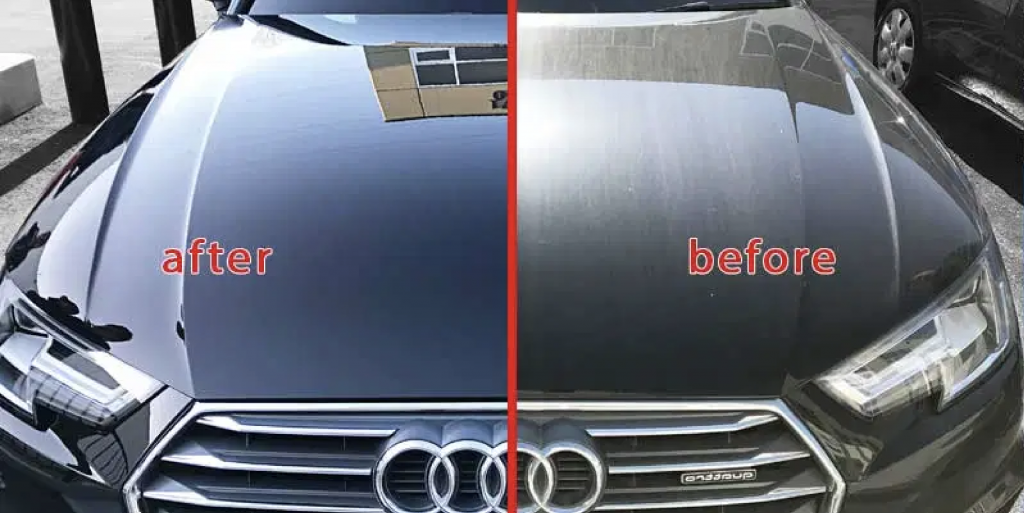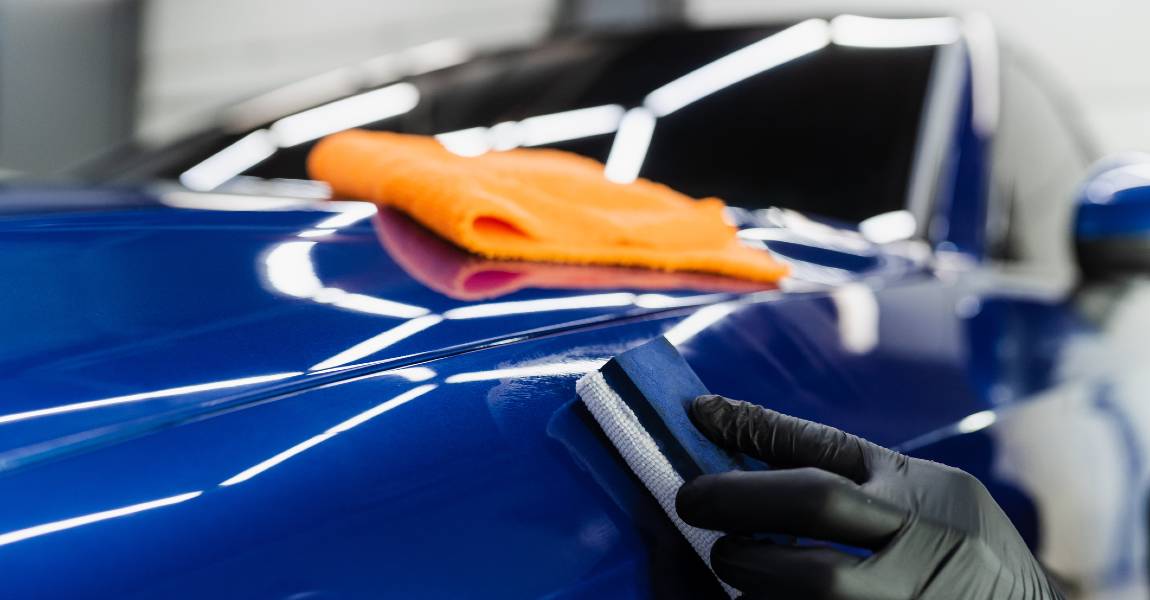Protect your vehicle from dirt with expert ceramic coating.
Protect your vehicle from dirt with expert ceramic coating.
Blog Article
How Ceramic Finish Shields Your Vehicle's Paint and Keeps It Looking New
Ceramic finish has become a noticeable solution for auto paint defense, offering a durable defense against a variety of ecological dangers. By producing a semi-permanent bond with the vehicle's surface area, it effectively seals microscopic blemishes and supplies a shield against oxidation, dirt, and UV damages. This not only preserves the aesthetic charm of the car but also simplifies maintenance routines. Yet, the details of how this technology functions and its benefits over standard methods require a closer examination, exposing compelling factors to consider this cutting-edge strategy for your automobile.
What Is Ceramic Finishing?
Ceramic finishing is often related to as a revolutionary advancement in automobile paint protection. ceramic coating. This advanced product is a liquid polymer that chemically bonds with the car's factory paint, developing a protective layer that boosts durability and visual allure. Unlike typical wax or sealants, which supply only temporary defense, ceramic coverings offer resilient outcomes, typically covering numerous years with correct maintenance
The primary elements of ceramic coverings are silicon dioxide (SiO2) and titanium dioxide (TiO2), which add to their hydrophobic buildings. This hydrophobic nature enables water to grain and roll off the surface, successfully protecting against impurities like dust, crud, and bird droppings from sticking to the paint. Consequently, lorries treated with ceramic coverings need much less constant washing and are simpler to preserve.
Additionally, ceramic coverings supply UV defense, which helps avoid oxidation and fading of the paint because of sunlight direct exposure. This facet not only maintains the automobile's visual allure yet also adds to its resale worth over time. Generally, ceramic coatings stand for a considerable jump onward in the world of automotive treatment, using a robust solution for car owners seeking to protect their investment.
Just How Ceramic Layer Functions
How does the process of ceramic layer produce an awesome barrier against environmental risks? Ceramic finish includes a liquid polymer that chemically bonds with the manufacturing facility paint of a lorry. This bond develops a protective layer that is both hydrophobic and long lasting. The key component of ceramic finishings is silica dioxide (SiO ₂), which provides superior solidity and durability against scratches, UV rays, and other exterior pollutants.
When used appropriately, the finish penetrates the microscopic pores of the paint surface area, creating a semi-permanent bond. This causes a smooth, glossy finish that improves the lorry's aesthetic allure while at the same time warding off water, dust, and grime. The hydrophobic nature of the layer makes certain that contaminants slide off quickly, reducing the regularity of cleaning and the chance of scratches during cleansing.

Benefits of Ceramic Covering
The application of ceramic finishing offers numerous advantages that considerably improve the protection and appearance of a car's paint. Among the main advantages is its ability to produce a durable, hydrophobic layer that drives away water, dirt, and various other pollutants. This residential or commercial property not just keeps the surface area cleaner for longer periods but likewise makes washing the car less complicated and less labor-intensive.
Additionally, ceramic finishes give remarkable security versus unsafe UV rays, which can cause oxidation and fading gradually. ceramic coating. This UV resistance helps keep the initial color and gloss of the vehicle's paint, thus maintaining its visual appeal for many years
Furthermore, ceramic finishes are chemically immune, providing security against acidic impurities such as bird droppings, tree sap, and road crud. This resistance aids prevent etching and discoloration, which can jeopardize the honesty of the paint.
Finally, the durability of ceramic layers expands beyond typical waxes and sealers, commonly lasting a number of years with appropriate upkeep. This durable protection inevitably equates into expense financial savings, as lorry proprietors can reduce the frequency of reapplication and maintenance initiatives. Generally, ceramic finishings represent a substantial investment in vehicle care.
Comparing Ceramic Finish to Typical Methods
Usually neglected in the pursuit for optimum car security, the comparison in between ceramic layer and conventional approaches such as shaving and sealants reveals substantial distinctions you can look here in longevity, performance, and upkeep. Traditional waxes typically supply a temporary safety layer, frequently lasting just a couple of weeks to a couple of months, while sealers can expand this period to a number of months. On the other hand, ceramic coverings provide a durable, long-lasting guard that can sustain for numerous years when correctly applied.
In regards to performance, ceramic finishings exhibit remarkable hydrophobic residential properties, effectively driving away water and pollutants, which avoids dirt and grime from sticking to the surface area. This property not just enhances the automobile's appearance but also simplifies the cleaning process. Traditional waxes and sealants, while they might provide some water resistance, do not match the level of protection supplied by ceramic finishings.
The maintenance routine for both choices splits considerably. While traditional approaches call for frequent reapplication and upkeep, ceramic finishings are developed to stand up to the roughness of day-to-day driving with marginal treatment, making them a more effective selection for auto lovers looking for long-term security. Inevitably, the selection in between ceramic covering and typical techniques depends upon the preferred degree of protection and maintenance commitment.
Maintenance Tips for Porcelain Coated Cars
Maintaining a ceramic covered vehicle calls for a calculated technique to make sure the longevity of the safety layer. Use a pH-neutral hair shampoo and microfiber laundry mitts to prevent scraping the layer while efficiently removing dust and pollutants.
Additionally, prevent automatic cars and truck cleans that use brushes, as these can endanger the honesty of the ceramic covering. Instead, opt for a touchless clean or a hand wash. After cleaning, drying out is critical; utilize a high-grade microfiber towel to stop water places.
Using a ceramic-specific maintenance spray can boost the covering's hydrophobic buildings and add an extra layer of protection. This need to be done regularly, depending on your driving conditions.

Conclusion
To conclude, ceramic layer serves as an efficient protective procedure for auto paint, using a durable obstacle versus ecological damage and boosting the vehicle's aesthetic charm. Its unique properties, link including hydrophobicity and UV protection, add to long-lasting sparkle and cleanliness. Contrasted to traditional techniques, ceramic finishes present premium efficiency and durability, ultimately address decreasing maintenance efforts. Embracing ceramic finishing innovation can significantly expand the life expectancy of a car's outside, guaranteeing it continues to be visually attractive and well-protected.
Report this page